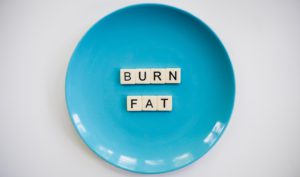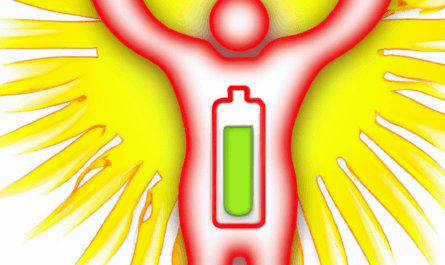Discover the power of deep belly breathing for runners
Poor breathing technique is quite often the reason why runners have to slow down their pace or even pause their run as they are too short of breath or they’ve developed side stitches. Runners can benefit a lot if they breathe properly during their workout. Not only will it boost the overall performance, but it can also reduce the chance of injuries and -for those who run to lose weight- it can increase fat burn too! Most runners focus on their pace, heartbeat and strides. It’s recommendable to have a closer look at breathing techniques as well though.
Respiratory rate (breathing rhythm)
The muscle movement of breathing costs energy so if your breathing is faster than necessary, you simply consume too much energy and you will get tired faster. This is called an inefficient respiratory rate.

Therefor it would be very useful to learn techniques to optimise your breathing: Slowing down your breathing rhythm will make your oxygen intake as efficient as possible. I can assure you that a bit of practice is well worth the try! Being an ex-competitive swimmer, I know the importance of rhythmic breathing. During a freestyle swim I used to count a number of breaths per amount of arm strokes. My breathing rhythm would depend on the speed and distance of the race (or training).
I’ve noticed that I breathe in rhythm during my runs too. But what would be the best breathing rate? Should we count our breathing per certain amount of strides and adjust the numbers to running intensity? It’s quite personal to be honest. My breathing rates are:
- Easy runs at low intensity: 3: 3 (three steps per breathe in and three steps per breathe out)
- Medium intensity runs: 2: 2 (two steps while breathing in and two steps while breathing out)
- Sprints and high-intensity runs: 1: 1
These rates might not apply to every runner. Just try out yourself a few different breathing rhythms and find the one that feels most comfortable to you. When the run gets tough and you feel like quitting the training, counting your breaths also helps you to distract you from negative thoughts. (see one of my previous posts “Running is a Mind game“)
Nose or mouth?

With your body at rest, you could breathe in and out through your nose. The air will be warmed up and filtered very well through your nose and it prevents you from taking in too much air. At rest, you only need only about 10 percent of your total oxygen capacity.
With heavier exertion you will need to inhale more air. Especially if you are getting tired as you go for a longer run or at a faster pace, your body needs more oxygen. As you can’t take in as much air through your nose as through your mouth, it makes sense to mainly breathe in and out through your mouth when needed when you are running faster. In general, the goal should be to in- and exhale in such way to ensure your oxygen intake and carbon dioxide expel are as efficiently as possible.
Chest or belly breathing?
We all like to improve our athletic performances, right? The most important thing I’ve learned to improve speed and duration of my longer runs, is to focus on deep belly breathing. This allows the air to reach all the way down to your belly in order to give the body enough time to absorb all the oxygen of it. Just try it on your next run: try to breath in as deep as possible. As if the air your breathe in were a liquid and you would poor it into your nose or mouth and let it flow down into your belly. This way you can increase the length of time you breathe in and breathe out. If you cannot do this while running, you might want to practice “deep belly breathing” first at rest.
Breathing in the chest (so called shallow breathing) tends to be shorter than deep belly breathing and it easily becomes irregular. This may affect your running pace. If you get short of breath, you might need to slow down or even stop the run completely. Irregular and shallow breathing can also lead to side stitches.

Deep belly breathing is slower and it uses the entire capacity of the lungs. The air that you breathe in goes down to the lower parts of your lungs and it stays here longer. This leads to more oxygen absorption. As oxygen is one of the most important energy suppliers, an optimised oxygen intake could improve your athletic performance enormously.
Check your current breathing style:
Stand up straight and place a hand on your stomach. Try to let the air sink into your belly. It is your belly that should expand when you breath in. It is also noticeable in the width if you put both hands on the side of your ribs. If you notice that you are raising your shoulders to make room in the chest, you know that you’re not belly breathing.
Deep belly breathing exercises:
- Lie down on your back (on a mat or in bed), relax and place your hands on your stomach.
- Breathe in and out deeply and consciously. You should be able to clearly feel your belly rise when you breathe in and fall as you breathe out.
- Focus on trying to exhale all the air out of your lungs. Pull your belly button in towards your spine during the practice. Deep and conscious exhaling will automatically lead you to inhale deeply again.
Once you’ve got the deep belly breathing technique while in rest, you can practice several times throughout the day (even while sitting in the car or at work). After a while belly breathing will become automatic and it will feel completely natural. Then use it during your runs and feel the difference in your endurance!
Additional benefits of belly breathing
Not only will deep belly breathing improve your running performance, it has other benefits as well:

Burn more Fat:
In human bodies the supply of fats is much larger than the sugar supply. If you run in order to lose weight, then high impact runs or sprints might not be the best thing to do. This because your body will choose to burn the sugars first, instead of the fats that you’re aiming at. If you’d exercise more calmly, automatically your breathing will be calmer. This slower breathing rhythm makes it possible to practice deep belly breathing. Your oxygen intake will be much more efficient and it will keep your heart rate lower. A relaxed body will choose to burn fat instead of sugar!
Prevent side stitches:
If you’ll practice deep belly breathing technique as part of your warming up routine, it will relax your so called: diaphragm muscle. This is the most important muscle used in respiration (breathing). It is a dome-shaped muscle which is located just below the lungs and the heart. It contracts as you breathe in and out.Start your run slowly and while doing so, focus on deep belly breathing. Gradually increase your speed to give your diaphragm muscle time to adjust to more intense breathing. This will warm up the entire body and allow you to run stitch-free.
Relaxation
Not only do I practice deep belly breathing during my workouts, I also use it to wind off when I go to bed. With the most calm and deepest belly breathing I can feel that my whole body and mind come to rest and then I can easily fall asleep within a few minutes.
Bottom line
Avoid shallow chest breathing and focus on deep, belly breathing. It will help you relax, it lowers your heart rate and blood pressure, and it optimises your lung capacity and oxygen absorption. Breathe through both your nose and mouth, but primarily through the latter. Try out rhythmic breathing during your run and find the one the breathing rhythm that feels most comfortable to you. I hope you will discover all benefits from deep belly breathing and improve your overall running performance. I have learned it from my yoga teacher and have become a big fan.

Please let me know if you have any questions about this topic. You can send me a private message at an*******@mo*********.com or just leave your comment below. Wishing you MoreFun2Run!






Hi,
Great post on the importance of breathing correctly during different forms of exercise. As an ex-boxer, I certainly could have practiced my breathing techniques a little better during my exercise periods. For anyone who suffered from stitches like I did pay attention to this article and its great advice.
As an ex-boxer I have a related question, what are your thoughts on best practice for recovery? 3 minutes work 60 seconds break for example
Best wishes
Justin
Hi Justin, Thanks for your comment. You’re asking me what I think is best practice on recovery. Well: once a week I do an interval training (High Impact: sprint-rest). These trainings vary: sometimes its for example 7 times 3 minutes sprints with 2 minutes rest. Other trainings it is 10 sets 2 minutes sprints with 1 minute rest. I also build in a recovery day after each running day. On those days I do yoga, I go to the gym for strengthening or I do totally nothing. I also take a massage regularly. Recovery days are where the fitness and strength of the body improves. It needs rest to compensate all the power that was used and shock absorption that happened during a running session. If another intense training is practiced too soon after the first we can easily get over-trained, which might lead to injuries. Sometimes after an intense training I even take 2 days off running. I might go swimming or just hiking easily. I think a good training schedule is very useful to guide runners as we sometimes get too excited and easily over-do things. Hope this answers your question?
Hello there,thanks for this awesome article it would be of great help to the public asit has been of help to me.i must say that you have done a great job on this article it as it is very informative and interesting too.this is a very concise study of the breathing systems because not until now I never new anything about deep belly breathing…I think I would engage it when I go on exercises and short runs
Thanks Feji! Please let me know how it goes. If you are a chest breather, then practice first at rest.
Awesome post Angelique. I’m a runner too. I’ll be 66 in a couple weeks and I’ve been running for more than 40 years. You’re right on about the breathing. Knowing how to breathe properly is vital. You’ve done a great job of driving that home. It’s not the only thing that’s important but it’s vital nonetheless. As someone who’s struggled with respiratory issues since I was a youngun, and who is also a former smoker (quit more than 30 years ago), I think it’s safe to say we speak the same language. Keep up the good work.
Thanks Bob! For sure proper breathing is not the only thing thats important to running. Over the past few years I’ve learned that (longer distance running is not “just running”….It comes with strenghtening, felxibility, rest, mental strength, discipline, good nutrition, drinking, different types of intensity trainings, good supportive shoes and comfortable sportswear, keeping data….and so on and so on….when I started I just thought it was just: put on some sneakers and go! How naïve I was.;)
Hello Angelique, I must say that this article is very helpful and informative. I often run with my friends primarily because of health and honestly, I need to lose some pounds. I really did not have an idea of proper breath, I am surprised how much I actually don’t know. You helped me a lot because I noticed that I get tired too soon, I will definitely remember this.
Thanks Danijel! Hope you’ll have MoreFun2Run! 😉
Thanks a lot for such an amazing review about Short of breath during running and side stitches? Treatment and explanations are given.
When we run it is advisable to breathe and hydrate. My friend participates in many marathons and you will surely be delighted by this article.
Thanks a lot for such an amazing review about Wealthy Affiliate and explanations are given.
Great explanation on breathing techniques. I didn’t realize that our breathing could effect our fat burn. I will incorporate the deep belly breathing into my speed walking routine (can’t run anymore because of the impact on my knees and hips). I’m headed off to try the deep belly breathing exercises now. Thanks!
Hi Karen, thanks for your comment. Please let me know how things are going with your deep belly breathing during walks. If you’re unfamiliar with it and you are a chest breather, try to practice in rest first, so you get the go of it.
Very informative article post. Lot of information related to breathing and being short of breath. Very helpful. Thanks
Hi Angelique,
Thank you for this awesome post. We cannot agree more about the importance of breathing during exercise. We notice that there are times during workouts that either JR or Zen would feel dizzy. Then we would realize that we may not be breathing properly such that the flow to oxygen to our brain may be affected. What kind of breathing would you recommend when doing exercise machines or lifting weights?
Hi! Well I do go to the gym myself as well and work on strengthening muscles too. I try to keep de breathing deep and slow. Exhale when power is used for the weight lift or push. Not sure if this is the “best” but it works well for me. I do not use extreme heavy weights though. So I suggest it’s good to ask some additional advice from a professional at the gym too.
Hello Angelique. I have gone for a few workouts before now but I am planning on doing it regularly and everyday. During my few times going out for workouts, I have observed this problem of being shot of breath while running. Well, I tried, practised and used deep belly breathing without actually knowing that was the name it’s called and it was truly effective and help me cover more distance without getting easily tired. It’s really nice and I have learnt more about it from this article plus it’s benefits are truly amazing! Thanks for sharing.
Regards!
Hiii, thanks for your comment and it is nice to hear that others are also experiencing the advantage of it as well. Keep up the good healthy and sporty spirit for 2020!